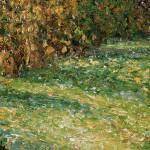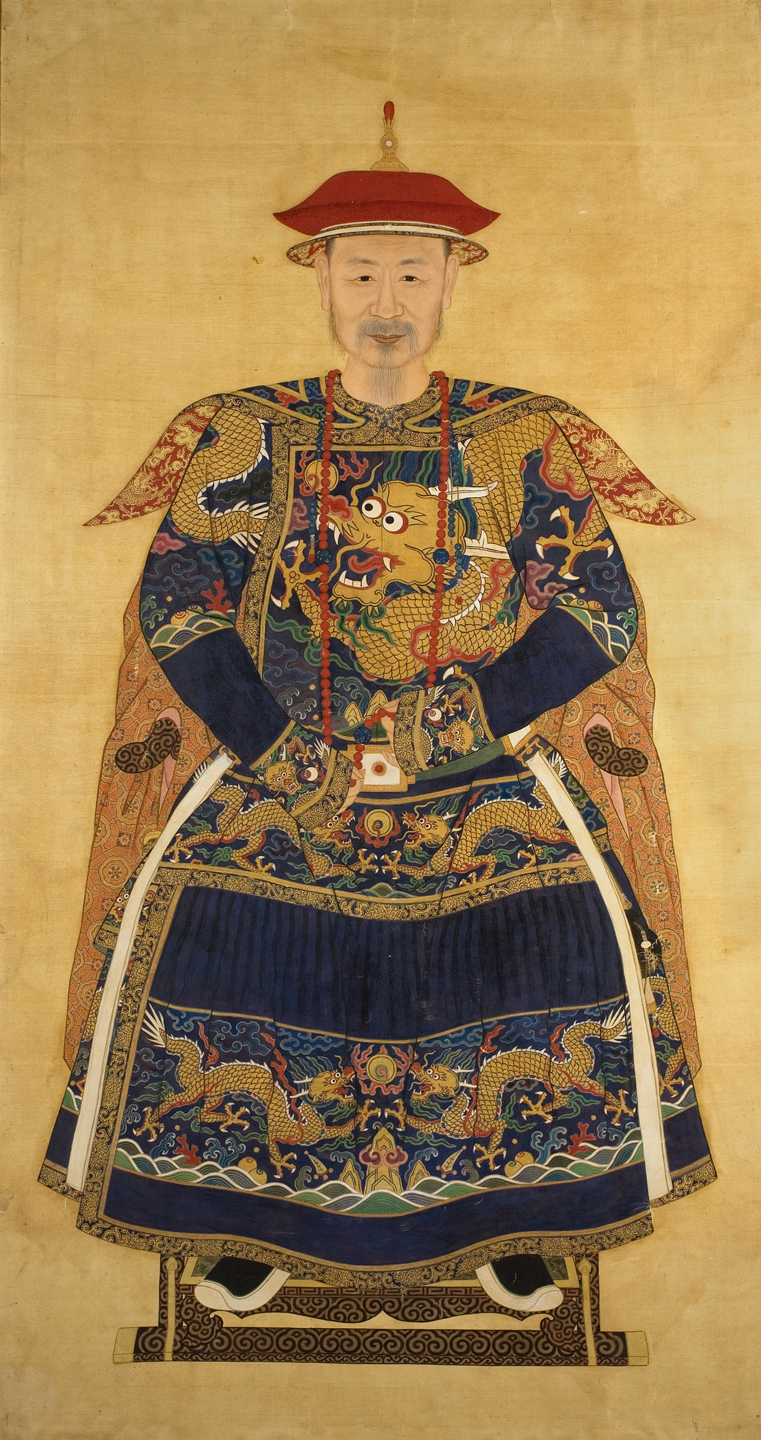After imagining themselves in the meadow in Pissarro’s Autumn Poplars, children will call up words the setting evokes. Using these words, the teacher will help the children write a poem that captures their thoughts, feelings, and sensory imaginings.
Students will be able to:
- closely examine Autumn Poplars and locate the cows in the background;
- identify at least five words that express what they feel, see, smell, or hear as they imagine themselves in that painting;
- identify at least three words to capture what they see in Autumn Poplars; and
- collaborate with classmates and the teacher to write a poem based on the words they generate.
Lesson
- Preparation: Read the About the Art section on Autumn Poplars, in particular the “Details". Look over the information found in the online document Writing Poetry Throughout the Primary School for ideas on how to craft the poem you will be writing with the students later in the lesson.
- Warm-up: Have the children work with a partner to list as many colors as they can find in the clothes they are wearing. Ask a pair or two to share what colors they noticed. See if anyone in the class can find a color that wasn’t mentioned. Tell the children that looking for little details helps them use their imaginations better, which is what they’re going to do today.
- Show children Pissarro’s Autumn Poplars. Have them call out colors that they notice. Ask them if they notice anything besides plants in the painting. If you can project the image, zoom in slowly until you are focused on the cows. If not, call the children’s attention to the cows. Have the children imagine what it’s like to be a cow in the meadow; you can even have them pretend they are cows munching grass.
- Place the children into groups of 3–4 and have them give you words that describe what the cows might be thinking or sensing as they eat the grass in this meadow. Tell them they should think about whether it’s warm or cold, if the grass is wet or dry, if there’s a breeze, what the air smells like, if they hear birds or other sounds, etc. Write down the words they call out.
- Tell the children that words help us capture something we see or imagine, just like the artist captured the scene with paints and his imagination. Put the words into a poem for the children and read it back to the class.
- Ask the children to vote for their favorite sections of the poem. Use only those sections to craft a new poem and read it aloud. This helps children learn about the value of editing.
Materials
- Access to the following online document for ideas on how to write the class poem: Writing Poetry Throughout the Primary School
- About the Art section on Autumn Poplars
- Color copies of the painting for children to share, or the ability to project the image onto a wall or screen
Standards
- Visual Arts
- Observe and Learn to Comprehend
- Language Arts
- Oral Expression and Listening
- Writing and Composition
- Collaboration
- Critical Thinking & Reasoning
- Invention
Autumn, Poplars, Éragny (Automne, Peupliers, Éragny)
- Camille Pissarro, French, 1830-1903
Camille Pissarro was born on the island of St. Thomas in the West Indies (Virgin Islands, when the island was still a territory of Denmark), where he spent most of his formative years. Pissarro was an artistic youth and spent much of his time drawing and painting. He moved to Paris in 1855, began his art studies, and joined a group of young painters who later became known as the Impressionists. Impressionist artists used bright colors, painted everyday scenes, and left their brushstrokes broken and visible—techniques that challenged the rules of academic painting at the time. Most Impressionists were not allowed to show their works at the Salon, the official French art exhibition, because of their unconventional approaches to painting. In response to their exclusion, Pissarro organized an exhibition of Impressionist paintings in 1874. A total of eight Impressionist exhibitions were organized after 1874 and Pissarro was the only artist in the group to show his work at all of them. He is considered by many to be the central figure of the Impressionists. In his time, Pissarro saw the Impressionist style move from being unconventional and rejected to favorable and admired.
Pissarro painted Autumn Poplars from the window of his country home in the village of Eragny, about an hour northwest of Paris. He loved painting outdoors and even invented an easel on wheels to help him accomplish this. Pissarro was an innovative artist, constantly searching for new means of expression; his style was always evolving. In this painting, Pissarro experimented with color, painting dots of pure, unmixed colors side by side. When viewed from a distance, the colors blend together, creating an image that is very different than what one would see close-up. He began experimenting with this technique after meeting French painter Georges Seurat [sur-AHT], who is known for this style of painting. Pissarro put his own twist on Seurat’s tight, tiny dot technique by using looser brushstrokes that appear more like dabs of paint.
Pissarro and the Impressionists had liberated themselves from the constraints of subject matter, composition, and style. Impressionists were breaking boundaries and exploring new ways to depict the world through painting. In light of their work, new possibilities opened up—among them what colors to use, what subjects to portray, and even how to paint them. Pissarro explored and experimented with these new possibilities throughout his career.
Details

Subject Matter
Pissarro, like most Impressionists, was interested in scenes from ordinary life and the effects of light. In this painting, there are no people, just several poplar trees in their rich autumn colors. Don’t miss the grazing cows in the background between the trees.

Color, Light, and Shadow
Many different colors can be seen in this painting: yellow, green, pink, red, black, and blue. Light shines from behind the trees, causing shadows to be cast, which were painted in a darker green, across the grass. Leaves that have fallen off the smaller tree in the foreground dot the green grass.

Brushstrokes
If you look closely at this painting, it’s easy to see thousands of small dots or dabs of paint. When viewed from a distance, the colors begin to blend into one another, creating a more recognizable image.
Funding for object education resources provided by a grant from the Morgridge Family Foundation. Additional funding provided by the William Randolph Hearst Endowment for Education Programs, and Xcel Energy Foundation. We thank our colleagues at the University of Denver Morgridge College of Education.
The images on this page are intended for classroom use only and may not be reproduced for other reasons without the permission of the Denver Art Museum. This object may not currently be on display at the museum.






